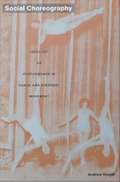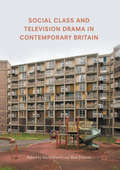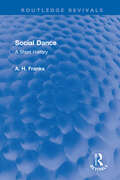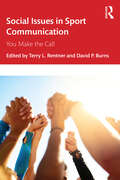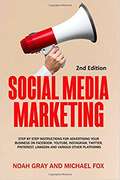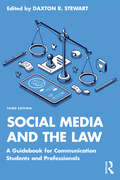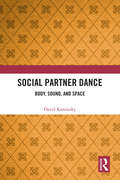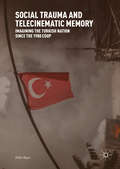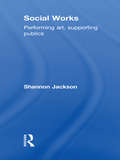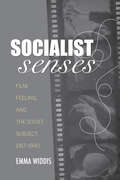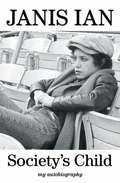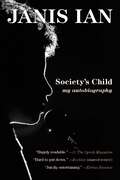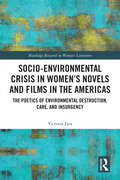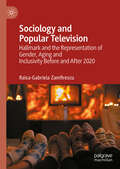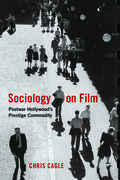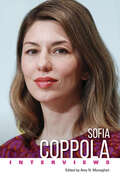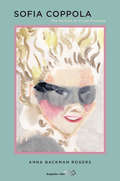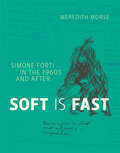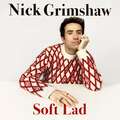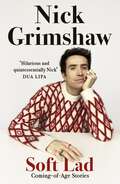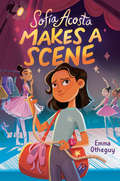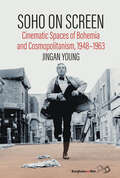- Table View
- List View
Social Choreography: Ideology as Performance in Dance and Everyday Movement
by Andrew HewittThrough the concept of "social choreography" Andrew Hewitt demonstrates how choreography has served not only as metaphor for modernity but also as a structuring blueprint for thinking about and shaping modern social organization. Bringing dance history and critical theory together, he shows that ideology needs to be understood as something embodied and practiced, not just as an abstract form of consciousness. Linking dance and the aesthetics of everyday movement--such as walking, stumbling, and laughter--to historical ideals of social order, he provides a powerful exposition of Marxist debates about the relation of ideology and aesthetics. Hewitt focuses on the period between the mid-nineteenth century and the early twentieth and considers dancers and social theorists in Germany, Britain, France, and the United States. Analyzing the arguments of writers including Friedrich Schiller, Theodor Adorno, Hans Brandenburg, Ernst Bloch, and Siegfried Kracauer, he reveals in their thinking about the movement of bodies a shift from an understanding of play as the condition of human freedom to one prioritizing labor as either the realization or alienation of embodied human potential. Whether considering understandings of the Charleston, Isadora Duncan, Nijinsky, or the famous British chorus line the Tiller Girls, Hewitt foregrounds gender as he uses dance and everyday movement to rethink the relationship of aesthetics and social order.
Social Class and Television Drama in Contemporary Britain
by Beth Johnson David ForrestThis collection is a wide-ranging exploration of contemporary British television drama and its representations of social class. Through early studio-set plays, soap operas and period drama, the volume demonstrates how class provides a bridge across multiple genres and traditions of television drama. The authors trace this thematic emphasis into the present day, offering fascinating new insights into the national conversation around class and identity in Britain today. The chapters engage with a range of topics including authorial explorations of Stephen Poliakoff and Jimmy McGovern, case studies of television performers Maxine Peake and Jimmy Nail, and discussions of the sitcom genre and animation form. This book offers new perspectives on popular British television shows such as Goodnight Sweetheart and Footballers' Wives, and analysis of more recent series such as Peaky Blinders and This is England.
Social Dance: A Short History (Routledge Revivals)
by Arthur FranksOriginally published in 1963 and authored by the then Editor of the Dancing Times, this was a pioneer work discussing not only the origins and development of many social dance forms from early times, but also relating these forms to their environment. As well as its role in social history, the book analyses the role of dance as a prime creative power in Renaissance spectacles which depicted and celebrated diplomatic, military and regal occasions. After a wide-ranging introductory chapter on the origins of dancing, the book takes the reader through the centuries, discussing in turn the Basse Danse and the Moresco of the Middle Ages, the Pavane, Galliard and Courante of the 16th Century, the Minuet of the 17th & 18th, the Allemande, the Waltz and the Polka as well as Jazz, the Cha Cha Cha, the Jive and Twist.
Social Issues in Sport Communication: You Make the Call
by Terry L. Rentner David P. BurnsCombining theory with practical application, this collection of real-life, provocative case studies on social issues in sports provides students with the opportunity to make the call on ethical and professional dilemmas faced by a variety of sport and communication professionals. The case studies examine the successes and failures of communication in the corporate culture of sport intersecting with social issues including race, gender, religion, social media, mass media, public health, and LGBTQ+ issues. Topics include the COVID-19 pandemic, the Black Lives Matter movement, sexual abuse scandals, domestic violence, cultural appropriation, and mental health. Each chapter contextualizes a specific issue, presents relevant theory and practical communication principles, and leads into discussion questions to prompt critical reflection. The book encourages students to view the evidence themselves, consider competing ethical and professional claims, and formulate practical responses. This collection serves as a scholarly text for courses in sport communication, business, intercultural communication, public relations, journalism, media studies, and sport management.
Social Media Marketing: Step by Step Instructions for Advertising Your Business on Facebook, Youtube, Instagram, Twitter, Pinterest, Linkedin and Various Other Platforms (Second Edition)
by Noah GrayThis book covers a lot of Social Media Platforms: Facebook, Facebook Advertising, Youtube, Instagram, Twitter, Pinterest, Linkedin, Snapchat, Reddit, Tumblr, Quora, Goodreads, Periscope, Flickr, Google Adwords, Google+. If you are ready to improve your business through social media marketing, this book will provide you with everything you need.
Social Media and the Law: A Guidebook for Communication Students and Professionals
by Daxton R. StewartThis fully updated third edition of Social Media and the Law offers an essential guide to navigating the complex legal terrain of social media. Social media platforms like Facebook, Twitter, Instagram, YouTube, and TikTok have become vital tools for professionals in the news and strategic communication fields. As these services have rapidly grown in popularity, their legal ramifications have continued to develop, resulting in students and professional communicators needing to be aware of laws relating to defamation, privacy, intellectual property, and government regulation. Editor Daxton Stewart brings together eleven media law scholars to address key questions, such as the following: To what extent do communicators put themselves at risk for lawsuits when they use these tools? What rights do communicators have when other users talk about them on social networks? How can people and companies manage intellectual property issues consistent with the developing law in this area? This book is essential for students of media, mass communication, strategic communication, journalism, advertising, and public relations, as well as professional communicators that use social media in their role.
Social Partner Dance: Body, Sound, and Space
by David KaminskySocial Partner Dance: Body, Sound, and Space is an ethnographic theory of social partner dancing built on participant observation and interviews with instructors of tango, lindy hop, salsa, blues, and various other forms. The work establishes a general analytical language for the study of these dances, based on the premise that a thorough understanding of any lead/follow form must consider in depth how it manages the four-part relationship between self, partner, music, and surroundings. Each chapter begins with a brief vignette on a distinct dance form and explores the focused worlds of partnered dancing done for the joy and entertainment of the dancers themselves. Grounded intellectually in embodiment studies and sensory ethnography, and empirically in ethnographic fieldwork, Social Partner Dance promotes scholarship that understands the social, cultural, and political functions of partner dance through its embodied practice.
Social Trauma and Telecinematic Memory
by Pelin BaşcıThis book explores responses to authoritarianism in Turkish society through popular culture by examining feature films and television serials produced between 1980 and 2010 about the 1980 coup. Envisioned as an interdisciplinary study in cultural studies rather than a disciplinary work on cinema, the book advocates for an understanding of popular culture in discerning emerging narratives of nationhood. Through feature films and television serials directly dealing with the coup of 1980, the book exposes tropes and discursive continuities such as "childhood" and "the child". It argues that these conventional tropes enable popular debates on the modern nation's history and its myths of identity.
Social Works: Performing Art, Supporting Publics
by Shannon Jackson‘a game-changer, a must-read for scholars, students and artists alike’ – Tom Finkelpearl At a time when art world critics and curators heavily debate the social, and when community organizers and civic activists are reconsidering the role of aesthetics in social reform, this book makes explicit some of the contradictions and competing stakes of contemporary experimental art-making. Social Works is an interdisciplinary approach to the forms, goals and histories of innovative social practice in both contemporary performance and visual art. Shannon Jackson uses a range of case studies and contemporary methodologies to mediate between the fields of visual and performance studies. The result is a brilliant analysis that not only incorporates current political and aesthetic discourses but also provides a practical understanding of social practice.
Socialist Senses: Film, Feeling, and the Soviet Subject, 1917–1940
by Emma Widdis&“Widdis&’s rich and fascinating book has opened a new perspective from which to think about the Soviet cinema.&” —Kritika This major reimagining of the history of Soviet film and its cultural impact explores the fundamental transformations in how film, through the senses, remade the Soviet self in the 1920s and 1930s. Following the Russian Revolution, there was a shared ambition for a &‘sensory revolution&’ to accompany political and social change: Soviet men and women were to be reborn into a revitalized relationship with the material world. Cinema was seen as a privileged site for the creation of this sensory revolution: Film could both discover the world anew, and model a way of inhabiting it. Drawing upon an extraordinary array of films, noted scholar Emma Widdis shows how Soviet cinema, as it evolved from the revolutionary avant-garde to Socialist Realism, gradually shifted its materialist agenda from emphasizing the external senses to instilling the appropriate internal senses (consciousness, emotions) in the new Soviet subject.
Society's Child: My Autobiography
by Janis IanGrammy Award-winning singer and songwriter Janis Ian's memoir of her more than forty years in the music business. Janis Ian was catapulted into the spotlight in 1966 at the age of fifteen when her soul-wrenching song "Society's Child" became a national hit. An intimate portrait of an interracial relationship, "Society's Child" climbed the charts despite the fact that many radio stations across the country refused to play it because of its controversial subject matter. But this was only the beginning of a long and illustrious career. In this fascinating memoir of her life in the music business, Ian chronicles how she did drugs with Jimi Hendrix, went shopping for Grammy clothes with Janis Joplin, and sang with Mel Torm --all the while never ceasing to create unforgettable music. In Society's Child, Ian shares with readers what it felt like to move in and out of the public eye. In 1975 her legendary song "At Seventeen" earned two Grammy awards and five nominations. But during the 1980s she made a conscious decision to walk away from the often grueling music business to study ballet and acting. She also struggled through a difficult marriage that ended with her then husband's threat to kill her. The hiatus from music lasted for nearly a decade until, in 1993, Ian returned with the release of Breaking Silence. Rather than risk losing artistic control, she took out a second mortgage on her home to fund the record. It paid off as Breaking Silencegained Ian her ninth Grammy nomination. Now in her fifth decade, Ian continues to draw large audiences around the globe. Janis Ian has inspired generations of fans and in this moving book she shares the fascinating story of her life in music.
Society's Child: My Autobiography
by Janis IanJanis Ian was catapulted into the spotlight in 1966 at the age of fifteen, when her soul-wrenching song Society's Child became a hit. An intimate portrait of an interracial relationship, Society's Child climbed the charts despite the fact that many radio stations across the country refused to play it because of its controversial subject matter. But this was only the beginning of a long and illustrious career. In this fascinating memoir of her more than forty years in the music business, Ian chronicles how she did drugs with Jimi Hendrix, went shopping for Grammy clothes with Janis Joplin, and sang with Mel Tormé all the while never ceasing to create unforgettable music. In 1975, Ian's legendary At Seventeen earned two Grammy awards and five nominations. Her next two albums brought her worldwide platinum hits. But after seven albums in as many years, she made a conscious decision to walk away from the often grueling music business. During this period, she struggled through a difficult marriage that ended with her then husband's attempt to destroy her, and a sudden illness that very nearly cost her her life. The hiatus from music lasted for close to a decade until, in 1993, Ian returned with the release of the Grammy-nominated Breaking Silence. Now, as she moves gracefully into her fifth decade as a recording artist and writer, Ian continues to draw large audiences around the globe. In Society's Child, Janis Ian provides a relentlessly honest account of the successes and failures?and the hopes and dreams?of an extraordinary life.
Socio-Environmental Crisis in Women’s Novels and Films in The Americas: The Poetics of Environmental Destruction, Care, and Insurgency (Routledge Research in Women's Literature)
by Victoria JaraThe climate crisis has reached a critical point, necessitating urgent global action. Women’s activism against environmental dispossession in the Americas manifests not only in protests and classrooms but also through artistic filmmaking and writing. This book focuses on the overlooked contributions of women filmmakers and novelists, highlighting how their work reveals the connections between environmental dispossession and various injustices related to gender, ethnicity, age, class, and labor. It demonstrates that contemporary women in the Americas engage deeply with ecological issues, analyzing their representations and identifying common principles across texts. Using an interdisciplinary approach from environmental humanities, gender and Indigenous studies, and film and literary studies, the author compares works from Canada and Latin America. Three poetics emerge: environmental destruction critiques harmful development; care expands notions of reciprocity beyond the human; and insurgency showcases struggles against extractivist models. These works invite readers to understand the complex interconnections of environmental justice within society.
Sociology and Popular Television: Hallmark and the Representation of Gender, Aging and Inclusivity Before and After 2020
by Raisa-Gabriela ZamfirescuThis book examines representations of gender, age and identity across the Hallmark film and television output in relation to specific periods of time that pertain to changes within the specific entertainment sector. Using a comprehensive collection of 628 original Hallmark television films released between January 2015 and December 2023, the book applies content analysis to a variety of quantitative, qualitative, and mixed data, including behind-the-scenes credits, actors and actresses, characters and their narratives, promotional posters, Facebook comments, and official synopsis. In addition to examining diversity of race and religion, it analyses ageism through the portrayal of elders and young people in idealized imagery and stereotypes, inclusivity of LGBTQ and disabled characters, and ageism in relation to both masculinities and femininities. This book will be of interest to readers in fields including gender studies and sociology, visual communication, film and television studies, aging, media and communications, and popular culture.
Sociology on Film: Postwar Hollywood's Prestige Commodity
by Professor Chris CagleAfter World War II, Hollywood’s “social problem films”—tackling topical issues that included racism, crime, mental illness, and drug abuse—were hits with critics and general moviegoers alike. In an era of film famed for its reliance on pop psychology, these movies were a form of popular sociology, bringing the academic discipline’s concerns to a much broader audience. Sociology on Film examines how the postwar “problem film” translated contemporary policy debates and intellectual discussions into cinematic form in order to become one of the preeminent genres of prestige drama. Chris Cagle chronicles how these movies were often politically fractious, the work of progressive directors and screenwriters who drew scrutiny from the House Un-American Activities Committee. Yet he also proposes that the genre helped to construct an abstract discourse of “society” that served to unify a middlebrow American audience. As he considers the many forms of print media that served to inspire social problem films, including journalism, realist novels, and sociological texts, Cagle also explores their distinctive cinematic aesthetics. Through a close analysis of films like Gentleman’s Agreement, The Lost Weekend, and Intruder in the Dust, he presents a compelling case that the visual style of these films was intimately connected to their more expressly political and sociological aspirations. Sociology on Film demonstrates how the social problem picture both shaped and reflected the middle-class viewer’s national self-image, making a lasting impact on Hollywood’s aesthetic direction.
Sofia Coppola: Interviews (Conversations with Filmmakers Series)
by Amy N. MonaghanSofia Coppola (b. 1971) was baptized on film. After appearing in The Godfather as an infant, it took twenty-five years for Coppola to take her place behind the camera, helming her own adaptation of Jeffrey Eugenides’s celebrated novel The Virgin Suicides. Following her debut, Coppola was the third woman ever to be nominated for Best Director and became an Academy Award winner for Best Original Screenplay for her sophomore feature, Lost in Translation. She has also been awarded the Golden Lion at the Venice Film Festival and Best Director at Cannes. In addition to her filmmaking, Coppola is recognized as an influential tastemaker. She sequenced the so-called Tokyo dream pop of the Lost in Translation soundtrack like an album, a success in its own right. Her third film, Marie Antoinette, further showcased Coppola’s ear for the unexpected needle drop, soundtracking the controversial queen’s life with a series of New Romantic bangers popular during the director’s adolescence. The conversations compiled within Sofia Coppola: Interviews mark the filmmaker’s progression from dismissed dilettante to acclaimed auteur of among the most visually arresting, melancholy, and wryly funny films of the twenty-first century. Coppola discusses her approach to collaboration, Bill Murray as muse, and how Purple Rain blew her twelve-year-old mind. There are interviews from major publications, but Coppola speaks with musician Kim Gordon for indie magazine Bust and Tavi Gevinson, then-adolescent founder of online teen magazine Rookie, as well. The volume also features a new and previously unpublished interview conducted with volume editor Amy N. Monaghan in which Coppola discusses her plans for the now-cancelled adaptation of The Custom of the Country. To read these interviews is to witness Sofia Coppola coming into her own as a world-renowned artist.
Sofia Coppola: The Politics of Visual Pleasure
by Anna Backman RogersA feminist study of the mood, texture, tone, and multifaceted meaning of director Sofia Coppola’s aesthetic through her most influential and well-known films. A Choice Outstanding Academic Title 2019 “With this book Rogers has produced a sophisticated and impassioned analysis of Coppola’s work… Rogers’s main argument – that Coppola manipulates pleasurable images to unsettle rather than mollify us – is utterly convincing. If nothing else, this certainly hits home in relation to my own enchantment with Coppola’s work.”—Bright Lights Film Journal All too often, the movies of Sofia Coppola have been dismissed as “all style, no substance.” But such an easy caricature, as this engaging and accessible survey of Coppola’s oeuvre demonstrates, fundamentally misconstrues what are rich, ambiguous, meaningful films. Drawing on insights from feminist philosophy and psychology, the author here takes an original approach to Coppola, exploring vital themes from the subversion of patriarchy in The Virgin Suicides to the “female gothic” in The Beguiled. As Rogers shows, far from endorsing a facile and depoliticized postfeminism, Coppola’s films instead deploy beguilement, mood, and pleasure in the service of a robustly feminist philosophy. From the Introduction: Sofia Coppola possesses a highly sophisticated and intricate knowledge of how images come to work on us; that is, she understands precisely how to construct an image – what to add in and what to remove – in order to achieve specific moods, tones and cinematic affects. She knows that similar kinds of images can have vastly different effects on the viewer depending on their context…. This monograph is an extended study of Coppola’s outstanding ability to think through and in images.
Soft Is Fast: Simone Forti in the 1960s and After
by Meredith MorseAn innovative analysis of Simone Forti's interdisciplinary art, viewing her influential 1960s “dance constructions” as negotiating the aesthetic strategies of John Cage and Anna Halprin.Simone Forti's art developed within the overlapping circles of New York City's advanced visual art, dance, and music of the early 1960s. Her “dance constructions” and related works of the 1960s were important for both visual art and dance of the era. Artists Robert Morris and Yvonne Rainer have both acknowledged her influence.Forti seems to have kept one foot inside visual art's frames of meaning and the other outside them. In Soft Is Fast, Meredith Morse adopts a new way to understand Forti's work, based in art historical analysis but drawing upon dance history and cultural studies and the history of American social thought. Morse argues that Forti introduced a form of direct encounter that departed radically from the spectatorship proposed by Minimalism, and prefigured the participatory art of recent decades.Morse shows that Forti's work negotiated John Cage's ideas of sound, score, and theater through the unique approach to movement, essentially improvisational and grounded in anatomical exploration, that she learned from performer and teacher Ann (later Anna) Halprin. Attentive to Robert Whitman's and La Monte Young's responses to Cage, Forti reshaped Cage's concepts into models that could accommodate Halprin's charged spaces and imagined, interpenetrative understanding of other bodies.Morse considers Forti's use of sound and her affective use of materials as central to her work; examines Forti's text pieces, little discussed in art historical literature; analyzes Huddle, considered one of Forti's signature works; and explicates Forti's later improvisational practice. Forti has been relatively overlooked by art historians, perhaps because of her work's central concern with modes of feeling and embodiment, unlike other art of the 1960s, which was characterized by strategies of depersonalization and affectlessness. Soft Is Fast corrects this critical oversight.
Soft Lad: A collection of stories (about me)
by Nick GrimshawThe debut book from much-loved Radio Royalty, DJ and TV personality, Nick Grimshaw.In Soft Lad, for the first time, Grimmy will share his outlooks, surprising obsessions and personal experiences with the world, in audiobook form, from his 14 year career climbing to the helm of the Radio 1 breakfast show, he'll discuss everything from his love of music through to self-care and partying, Red Nose Day, coming out, dogs, family, ADHD, Catholicism, and his journey from Oldham, Lancashire to the bright lights and big city of London - with all that he's seen in-between. These are his very best tales and learnings about himself from things gone right and wrong, with all the high and lows, that will make listeners laugh, cry and feel completely nostalgic. It is a heartfelt read that's unmistakeably Grimmy.(P)2022 Hodder & Stoughton Limited
Soft Lad: Coming-of-age Stories
by Nick GrimshawComing-of-age stories from much loved radio royalty, DJ and TV personality Nick Grimshaw - now with a new chapter.'Hilarious and quintessentially Nick. Unapologetically himself always, and that's what I love the most' Dua Lipa'Very funny, very sweet and full of charm -- a bit like the man himself' Graham NortonFrom partying with pop stars and chatting breeze on the radio, to drinking too much, to not drinking at all, to growing up, coming out, general nonsense, the journey from self-loathing to self-care and making dreams come true. These are Grimmy's brilliant, nostalgic coming-of-age tales, covering life's pivotal moments, the loves, the losses, and the fun had with the family and friends that made him. Heart-breaking and heartening in equal measure, Nick will have you laughing out loud, feeling all the emotions and (potentially) having a good cry.'A snapshot of his formative moments that feel relatable, emotional and downright unfiltered . . . like a good long chat with a mate you have always adored' Glamour'One of those fearlessly honest books that manages to be moving and thought-provoking and funny at the same time. A bit like him really' Emily Dean, The Times'Personal and beautifully written . . . I can't recommend it enough' Tom Allen, Virgin Radio
Soft Lad: Coming-of-age Stories
by Nick GrimshawComing-of-age stories from much loved radio royalty, DJ and TV personality Nick Grimshaw - now with a new chapter.'Hilarious and quintessentially Nick. Unapologetically himself always, and that's what I love the most' Dua Lipa'Very funny, very sweet and full of charm -- a bit like the man himself' Graham NortonFrom partying with pop stars and chatting breeze on the radio, to drinking too much, to not drinking at all, to growing up, coming out, general nonsense, the journey from self-loathing to self-care and making dreams come true. These are Grimmy's brilliant, nostalgic coming-of-age tales, covering life's pivotal moments, the loves, the losses, and the fun had with the family and friends that made him. Heart-breaking and heartening in equal measure, Nick will have you laughing out loud, feeling all the emotions and (potentially) having a good cry.'A snapshot of his formative moments that feel relatable, emotional and downright unfiltered . . . like a good long chat with a mate you have always adored' Glamour'One of those fearlessly honest books that manages to be moving and thought-provoking and funny at the same time. A bit like him really' Emily Dean, The Times'Personal and beautifully written . . . I can't recommend it enough' Tom Allen, Virgin Radio
Sofía Acosta Makes a Scene
by Emma OtheguyA poignant, coming of age story about a Cuban-American girl trying to figure out where she belongs--both in her ballet-loving family and the wider world. Perfect for fans of Front Desk and Merci Suárez Changes Gears.It&’s a good thing Sofía Acosta loves dreaming up costumes, because otherwise she&’s a ballet disaster—unlike her parents, who danced under prima ballerina Alicia Alonso before immigrating to the suburbs of New York. Luckily, when the Acostas host their dancer friends from Cuba for a special performance with the American Ballet Theatre, Sofía learns there&’s more than dance holding her family together. Between swapping stories about Cuba and sharing holiday celebrations, the Acostas have never been more of a team. Then Sofía finds out about the dancers&’ secret plans to defect to the United States, and makes a serious mistake—she confides in her best friend, only to discover that Tricia doesn't want "outsiders" moving to their community. Now Sofía wonders what the other neighbors in her tight-knit suburban town really think of immigrant families like hers. Sofía doesn&’t want to make a scene, but if she doesn&’t speak up, how will she figure out if her family really belongs?
Soho on Screen: Cinematic Spaces of Bohemia and Cosmopolitanism, 1948-1963
by Jingan YoungDespite Soho’s rich cultural history, there remains an absence of work on the depiction of the popular neighbourhood in film. Soho on Screen provides one of the first studies of Soho within postwar British cinema. Drawing upon historical, cultural and urban studies of the area, this book explores twelve films and theatrically released documentaries from a filmography of over one hundred Soho set productions. While predominantly focusing on low-budget, exploitation films which are exemplars of British and international filmmaking, Young also offers new readings of star and director biographies, from Laurence Harvey to Emeric Pressburger, and in so doing enlivens discussion on filmmaking in a time and place of intense social transformation, technological innovation and growing permissiveness.
Soho on Screen: Cinematic Spaces of Bohemia and Cosmopolitanism, 1948-1963
by Jingan YoungDespite Soho’s rich cultural history, there remains an absence of work on the depiction of the popular neighbourhood in film. Soho on Screen provides one of the first studies of Soho within post-war British cinema. Drawing upon historical, cultural and urban studies of the area, this book explores twelve films and theatrically released documentaries from a filmography of over one hundred Soho set productions. While predominantly focusing on low-budget, exploitation films which are exemplars of British and international filmmaking, Young also offers new readings of star and director biographies, from Laurence Harvey to Emeric Pressburger, and in so doing enlivens discussion on filmmaking in a time and place of intense social transformation, technological innovation and growing permissiveness.
